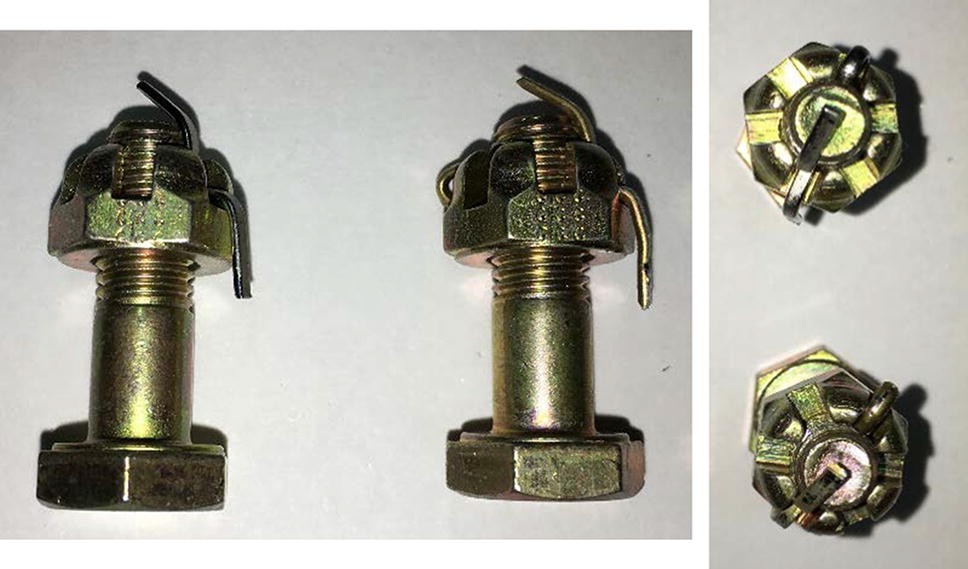How to Clean Your Car’s Oxygen Sensor for Better Performance
Can cleaning your car’s oxygen sensor help your car run better? Yes, it can. Cleaning this sensor is key to keeping your car in top shape. We’ll show you how to do it right and why it matters.
Key Takeaways
- Regular cleaning of your car’s oxygen sensor can improve fuel efficiency and performance
- Using the right tools and materials is key to effective cleaning
- Knowing how to clean your oxygen sensor can save you money on repairs
- The best cleaning method uses both chemicals and mechanical tools
- Following car oxygen sensor cleaning tips helps you avoid mistakes
- Keeping your oxygen sensor clean can make your car last longer
Understanding Your Car’s Oxygen Sensor
Before we talk about DIY car oxygen sensor cleaning, let’s learn about the oxygen sensor. It checks the oxygen in exhaust gases. This helps the engine run better and cuts down on pollution.
Keeping your oxygen sensor clean is key. A dirty sensor can make your car use more fuel and run poorly. Cleaning your vehicle’s oxygen sensor can help, but knowing when to do it is important.
What is an Oxygen Sensor?
An oxygen sensor is a key part of your car’s pollution control. It watches the oxygen in exhaust gases. This info helps the engine run right.
How Oxygen Sensors Affect Engine Performance
A dirty oxygen sensor can mess up your car’s fuel use and performance. It can also cause more pollution. Keeping it clean is vital for your car to run well.
Signs of a Dirty Oxygen Sensor
Look out for signs like bad fuel use, poor engine performance, and more pollution. If you see these, clean or replace your oxygen sensor fast.
Essential Tools and Materials for Oxygen Sensor Cleaning
To clean your car’s oxygen sensor correctly, you need the right tools and materials. A car sensor cleaning guide will tell you what you need. This includes wrenches, pliers, and screwdrivers. You also need protective gear like gloves and safety glasses to stay safe.
Choosing the right cleaning solution is key for car maintenance tips. Pick a solution made for oxygen sensor cleaning and follow the instructions. You can use oxygen sensor cleaners or fuel injector cleaners. Make sure to read reviews and follow car sensor troubleshooting guides to pick the best one for your car.
Here are some essential tools and materials you’ll need for oxygen sensor cleaning:
- Oxygen sensor cleaning solution
- Wrenches and pliers
- Screwdrivers
- Protective gear (gloves, safety glasses)
- A car sensor cleaning guide or repair manual
Always follow the manufacturer’s instructions and be careful when cleaning your oxygen sensor. With the right tools and materials, you can clean your oxygen sensor well. This will help your car run better. For more tips and help, check your car’s repair manual or a trusted car sensor cleaning guide.
Safety Precautions Before Starting
Before you start cleaning your car’s oxygen sensor, make sure to be safe. Cleaning car engine sensors and using oxygen sensor cleaning solutions can be dangerous. Wear gloves, safety glasses, and a face mask to stay safe.
When cleaning car sensors, work in a place with good air and a steady surface. This helps avoid accidents and keeps you focused. Also, disconnect the battery and find the oxygen sensor. This stops electrical shocks and makes it easy to get to the sensor.
Here are some key safety precautions to keep in mind:
- Wear protective gloves and safety glasses to prevent injury
- Work in a well-ventilated area to avoid inhaling any harmful fumes
- Disconnect the battery to prevent any electrical shocks
- Locate the oxygen sensor and ensure that you can access it easily
By following these safety steps and using the right cleaning techniques, you can clean safely. Always put your safety first and take steps to avoid risks.
| Safety Precaution | Importance |
|---|---|
| Wearing protective gloves and safety glasses | High |
| Working in a well-ventilated area | High |
| Disconnecting the battery | Medium |
| Locating the oxygen sensor | Medium |
May you read this article: How Do I Know If My Brake Discs Are Bad?
Locating Your Vehicle’s Oxygen Sensor
To do oxygen sensor maintenance, you must find the sensor in your car. This can be hard if you don’t know the engine area well. The oxygen sensor is often near the exhaust manifold or in the exhaust system. Always check your car’s repair manual or a car sensor cleaning guide for the exact steps to find the sensor in your car.
When looking for the oxygen sensor, search for a small, round device with a wire. It’s usually held by a bracket or clip. Be gentle when you touch it to avoid breaking the sensor or its wire. If you’re not sure where the oxygen sensor is, ask a mechanic or a trusted oxygen sensor cleaning solution provider.
Here are some tips to find the oxygen sensor: * Check your car’s repair manual * Look for a small, round device with a wire * Check the exhaust manifold or exhaust system * Be careful not to damage the sensor or its wiring
By using these tips and a good car sensor cleaning guide, you can find the oxygen sensor. Then, you can do the needed oxygen sensor maintenance to keep your car running well.
Car Oxygen Sensor Cleaning Tips and Techniques
There are many ways to clean your car’s oxygen sensor. It’s key to know the best methods. This helps your car run better and use less fuel.
A guide on cleaning vehicle sensors can help a lot. It talks about using chemicals, tools, or taking it to a mechanic. Chemicals can clean deep, tools can scrub, and mechanics are experts.
- Chemical cleaning methods: effective, but may require specialized equipment and can be costly
- Mechanical cleaning approaches: can be DIY-friendly, but may not be as effective as chemical methods
- Professional cleaning options: provides expert cleaning, but can be more expensive than DIY methods
By following a good guide and using the best cleaning methods, your oxygen sensor will work well. This makes your car run better and saves fuel. Also, checking your oxygen sensor often can catch problems early.
| Cleaning Method | Effectiveness | Cost |
|---|---|---|
| Chemical Cleaning | High | Medium to High |
| Mechanical Cleaning | Medium | Low to Medium |
| Professional Cleaning | High | High |
Common Mistakes to Avoid During Cleaning
When cleaning your car’s oxygen sensor, avoid common mistakes. The wrong cleaning solution can damage the sensor or not clean it well. Automotive sensor cleaning techniques need careful thought about the solution and method.
To clean well, follow oxygen sensor performance tips and car oxygen sensor cleaning tips. Use a gentle solution, avoid harsh chemicals, and test the sensor after cleaning. Some mistakes to avoid are:
- Not following safety precautions, such as wearing gloves and working in a well-ventilated area
- Not testing the sensor after cleaning to ensure it’s functioning correctly
- Using a cleaning solution that’s too harsh or abrasive
By avoiding these mistakes and using the right techniques, you can clean your sensor well. Always follow car oxygen sensor cleaning tips and oxygen sensor performance tips for the best results.
May you read this article: Getting it wrong Oil leaks might be caused by worn-out seals, gaskets, or an incorrect oil change
Post-Cleaning Testing and Verification
After you clean the diy oxygen sensor, you must test it. This makes sure it works right. You need to check its performance and look for error codes.
A good oxygen sensor is key for your car’s engine. Regular oxygen sensor maintenance stops problems before they start. By testing and checking, you can fix any issues and keep your car running well.
Performance Checks
- Check the engine’s idle speed and mixture
- Monitor the fuel trim readings
- Verify the oxygen sensor’s voltage readings
Error Code Analysis
If your car shows error codes for the oxygen sensor, you must look at them. This tells you why it’s not working right.
Test Drive Guidelines
Then, take your car for a spin. Watch for any engine problems. This ensures your oxygen sensor is working right and your car runs well.
| Test | Expected Result |
|---|---|
| Idle speed test | Stable idle speed between 600-1000 RPM |
| Fuel trim test | Fuel trim readings within +/- 10% range |
| Oxygen sensor voltage test | Voltage readings between 0.1-0.9V |
Maintenance Schedule and Best Practices
To keep your car’s oxygen sensor working well, follow a regular maintenance plan. This means cleaning your vehicle’s oxygen sensor as needed. This helps prevent damage and keeps your engine running smoothly. By using car oxygen sensor cleaning tips, you can make your oxygen sensor last longer and improve your car’s performance.
Regular care is key to avoiding problems with a dirty oxygen sensor. A schedule helps catch issues before they start. Here are some tips for cleaning car oxygen sensors to remember:
- Check your owner’s manual for cleaning times
- Use a soft cleaning solution to protect the sensor
- Don’t use strong chemicals or rough materials
By following these tips and keeping up with maintenance, you can keep your oxygen sensor in top shape. Always check your owner’s manual for the best car oxygen sensor cleaning tips and schedules.
It’s also smart to watch your oxygen sensor’s performance often. This way, you can spot any problems early. By staying on top of maintenance and using tips for cleaning car oxygen sensors, you can make your oxygen sensor last longer. This keeps your car running at its best.
| Maintenance Task | Recommended Interval |
|---|---|
| Clean oxygen sensor | Every 30,000 to 50,000 miles |
| Check oxygen sensor performance | Every 12,000 to 15,000 miles |
When to Replace Instead of Clean
When troubleshooting a car sensor, you might wonder if to clean or replace the oxygen sensor. Sometimes, car sensor cleaning techniques just aren’t enough. The sensor might not work right again.
Some signs show you need to replace the sensor. These include a bad sensor, too much wear, or damage. If you see these signs, it’s time to replace the sensor. This keeps your engine running well. Here are things to think about when deciding to replace or clean the oxygen sensor:
- Age and mileage of the vehicle
- Condition of the sensor and surrounding components
- Cost and availability of replacement parts
Choosing the right replacement and installing it correctly is key. Cleaning car engine sensors can be tricky. If you do it wrong, it might cause more harm or make your car run poorly. Follow the maker’s instructions and be careful. This way, you can replace the sensor correctly and make your car run smoothly again.
May you read this article: How Electric Vehicle Mechanics are Evolving in the USA
Conclusion: Maximizing Your Oxygen Sensor’s Performance
Keeping your car’s oxygen sensor in good shape is key. It helps your engine run well, saves fuel, and keeps your car healthy. By using the car oxygen sensor cleaning tips from this guide, your oxygen sensor will work great. It will send the right info to your engine.
Cleaning your oxygen sensor often makes it last longer. It also stops expensive fixes later. Always be safe, use the right stuff, and check the sensor after cleaning.
Good oxygen sensor maintenance makes your car strong, fast, and fuel-efficient. It makes driving better. By taking care of this important task, your car will run well for a long time.
FAQ
What is an Oxygen Sensor?
An oxygen sensor checks the exhaust gases for oxygen. It helps the engine burn fuel better and cuts down on pollution.
How do Oxygen Sensors Affect Engine Performance?
A dirty oxygen sensor can make your car use more fuel and run poorly. It’s key to keep it clean for your car to run well.
What are the Signs of a Dirty Oxygen Sensor?
Signs include using more fuel, the engine not running smoothly, and more pollution. If you see these, get your sensor checked.
What Tools and Materials are Needed for Oxygen Sensor Cleaning?
You’ll need a special cleaner, wrenches, gloves, and safety glasses. Pick the right cleaner and use it safely.
What Safety Precautions Should I Take Before Cleaning the Oxygen Sensor?
Wear gloves, safety glasses, and a mask. Work in a place with good air and disconnect the battery first.
How Do I Locate the Oxygen Sensor in My Vehicle?
Finding the oxygen sensor can be hard. Look in your car’s manual or online to find it and its wires.
What are the Different Oxygen Sensor Cleaning Methods?
You can clean it with chemicals, by hand, or by taking it to a pro. Each method has its own good and bad points.
What Common Mistakes Should I Avoid During Oxygen Sensor Cleaning?
Don’t use the wrong cleaner or skip safety steps. Also, make sure to test the sensor after cleaning.
How Do I Test and Verify the Performance of the Cleaned Oxygen Sensor?
After cleaning, check the sensor’s work. Do tests, look at error codes, and drive the car to see if it’s working right.
How Often Should I Clean My Car’s Oxygen Sensor?
Clean it every 30,000 to 50,000 miles, or as your car’s maker suggests. This keeps it working well.
When Should I Replace the Oxygen Sensor Instead of Cleaning It?
If the sensor is damaged or worn out, you might need to replace it. Cleaning won’t fix it then.






2 Comments
I’m really impressed with your writing skills as well as with the
format to your blog. Is that this a paid subject
matter or did you customize it your self? Either way keep up the excellent
quality writing, it’s rare to see a nice weblog like this one today.
Instagram Auto comment!
thanks dear i try to best more